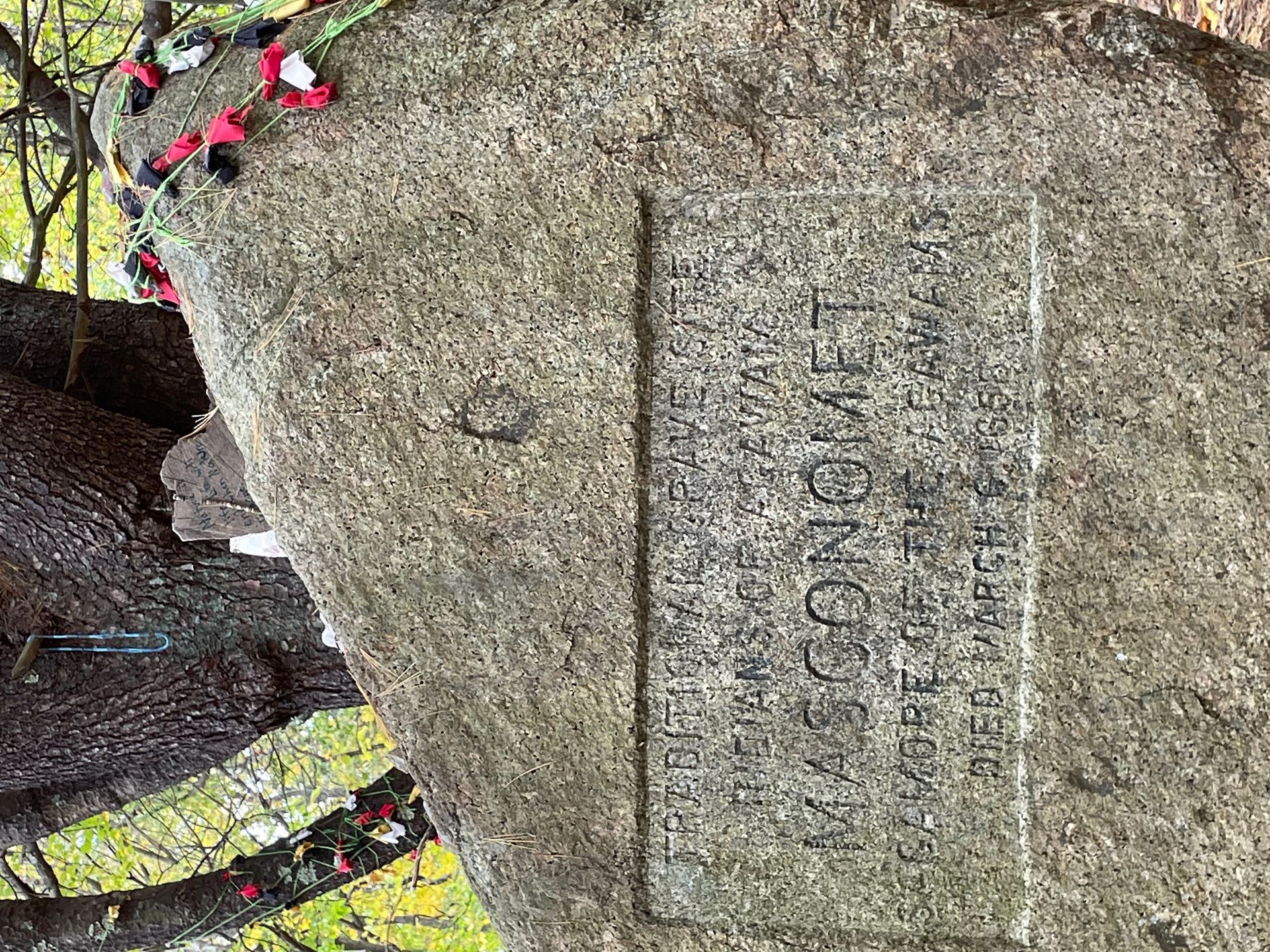 Biologist Nathan Mineo
Biologist Nathan Mineo
Did You Know...?
Indigenous People of Cape Ann
Written by Nathan Mineo
Reprinted from the 2023 Cape Ann Vernal Pond Team Newsletter
Photograph by Cheryl Briscoe
Did You Know that we are surrounded by Native American history? I’m sure we are all familiar with Cape Ann’s glacial history. It’s hard to miss all those big rocks (glacial erratics) and bolder fields (glacial moraines) when walking through the woods. They are, of course, the remnants of the last glacier to cover the area we call home. However, most of us know very little about the more than 12 thousand years that followed the melting of that glacier and preceded European colonization.
Back in my early high school days, my friends and I somehow found out that there was an “Indian burial ground” in South Woods, Rockport. We even learned of its approximate location and apparently found the information credible enough to spend many hours and many days tromping through cat briar and underbrush in an attempt to find this burial site (foolishly thinking we would be able to identify it). Decades later, I have come to find out that there is in fact a Native American burial site in South Woods, and in the vicinity of where we were looking. In fact, there are many known Native American burial sites across Cape Ann. They are the burial sites of the Pawtucket, the last native inhabitants of Cape Ann.
The Pawtucket have called Cape Ann and much of Northern Essex County home for about the past 750 years. The Pawtucket are part of the Pennacook people of New Hampshire’s lakes region, and they spoke a dialect of Algonquian. Cape Ann and Essex County provided the Pawtucket with a wide variety of wild resources, but they were primarily farmers with much of their movement and settlement around Essex County dependent on their agricultural needs. In fact, the already cleared land of this area was one of the main attractions that prompted European colonists to start settling here. And like the European settlements that supplanted them, Pawtucket settlements in this area were year-round, not seasonal as has been claimed in the past.
The Pawtucket’s main village in Gloucester was called Wanasquam. Just North of Pole Hill, Wanasquam was nestled in between the Mill and Annisquam rivers. Pole Hill holds great spiritual significance and was designed and used by the Pawtucket as an “astronomical observatory”. Those same glacial erratics we notice today were noticed by the Pawtucket as well, and the Pawtucket found them to have significant spiritual power. Many of our most familiar places in Rockport, Gloucester, Manchester, Essex, and the rest of Essex County were settlements, camps, corn fields, and places of spiritual significance. Much of that history has been lost to time and development, some has been excavated and preserved, but some can be seen in the landscape if you know where and how to look.
Almost all of the information above comes from Mary Ellen Lepionka’s Indigenous History of Essex County, Massachusetts. I strongly encourage you to visit the capeannhistory.org website and read the history she has put together. I found the Algonquian creation story particularly fascinating and insightful.
Historic Ipswich’s website (historicipswich.org) also has a lot of information, Indigenous Peoples of the North Shore.

Masconomet’s grave.
Sagamore Hill
Hamilton MA.
Photo by Nathan Mineo
Masconomet was Sagamore of the Pawtucket in this area during colonization. Sagamore’s were not chiefs, but served more as governors of an area. Their authority generally came from a birthright, but was not absolute. Agawam was a Pawtucket village located on Castle Neck, Ipswich, and the people were also referred to as “Agawam".